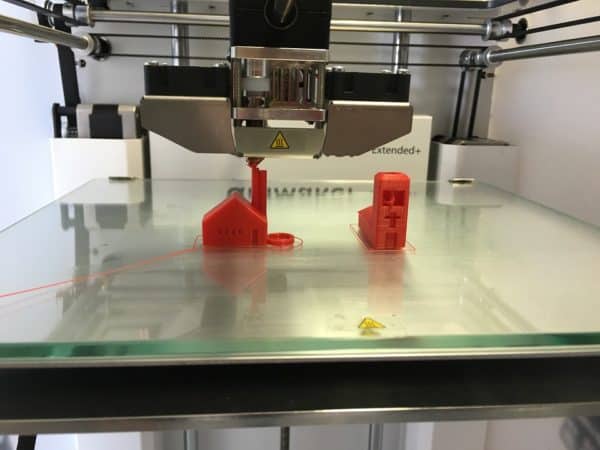
Innovative 3D printing options are now affordable to the public
In the past, the market for 3D printing has been limited to specialized companies. And while the innovator could design their ideas unhindered with the use of CAD, 3ds Max, Maya, and such programs, the development of a prototype was unobtainable for a great deal of innovators unless a 3D printing company was utilized. This is no longer the case, however. With the tremendous drop in 3D printer costs, innovators and creative minds can easily print their 3D projects from their own devices.
The Financial Shift
3D modelers and innovators can purchase a 3D printer for as low as $350 (M3D Micro 3D printer-0). When compared to the expense of having a 3D printing studio perform the work, it is about as cheap if not cheaper for the modeler to purchase and produce their design. Keep in mind that the professional 3D printers can run anywhere from a few thousand to several thousand dollars.
Apart from the financial benefit that this presents, the innovator is allowed to make adjustments to the design and reprint the prototype without having to go through the entire submission process again.
Evaluating your 3D printing needs
With the emergence of the 3D printer into the general public market, there are some considerations which should not be taken lightly, especially for those that deal with 3D modeling for clients. These considerations include:
- Supported 3D formats on the machine. Typically, you will want to ensure that the printer can handle .obj, .stl, .DWG, and/or .3ds formats
- Filament costs (material costs). If using various materials, calculate the costs of the most common material. A general rule of thumb is to take the costs of the replacement filament and materials and add 50% to cover shipping, tax, etc. Ensure your ROI is worth it.
- What print monitoring is available? Several 3D printers allow for monitoring via camera or phone. Check to see what options are available on your desired machine.
- What Sensors are used on the machine
- What is the build volume space
- Build time/Print time
Out of the above factors, the last two may be the most important considerations. Should the space allotted not fit with your design you will be required to either scale down or outsource the printing. If the print time is too time extensive, then the clientele will be limited.
What does the 3D printer offer to those not in CGI?
Where there is a level of formatting which a person must understand in order to use a 3D printer, the lower prices and the personal 3D printers make it possible for those without formal CGI training to enjoy 3D printed models. Specifically, those which are gamers, movie enthusiasts, as well as small businesses outside of the production sector are benefited. To explain:
- Gamers – The benefit for the gamer is that he or she can use a CGI purchasing platform such as CGTrader to purchase pre-made models which are specifically designed for 3D printing. So, if the gamer wants to have a model of something from Warcraft , Battlefront , or Batman Arkham Knight they can find these models and print them out.
- Movie enthusiasts – Props and other details of a movie can be printed out without the marketing costs of purchasing the same product from a novelty shop. If a person wants to have a lightsaber or Frodo’s sword, they can do that. So long as the print area and the 3D printer being used are compatible, the possibilities are limitless.
- Small businesses outside of the production sector – Small businesses which require parts which may not be accessible on the typical market can use the 3D printer to make the part needed. This is extremely helpful for those restoring older mechanics or for those needing a hard to find part.
Personal may not mean professional
It is true that the lower cost of the 3D printer allows for the market to open up substantially. Yet, this does not mean that the market has had a paradigm shift in the method in which professional 3D printing is conducted. This is primarily the result of the freelancer wanting to have a warranty on the product that he or she is producing, does not want to deal with another in-house expense, or the print is outside of the range of the printing space on a personal device. Additionally, the level of detail that can be accomplished on a personal printer typically is diminished from that of the professional grade 3D printers. In this case the saying “you get what you pay for” should be applied.
3D printers have become available to the public market, but they should be used as a tool primarily for the hobbyist and for the conceptualization artist. Those wishing to produce 3D models professionally should spend the extra money to have the better printer.
 Gearfuse Technology, Science, Culture & More
Gearfuse Technology, Science, Culture & More


